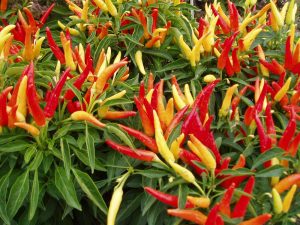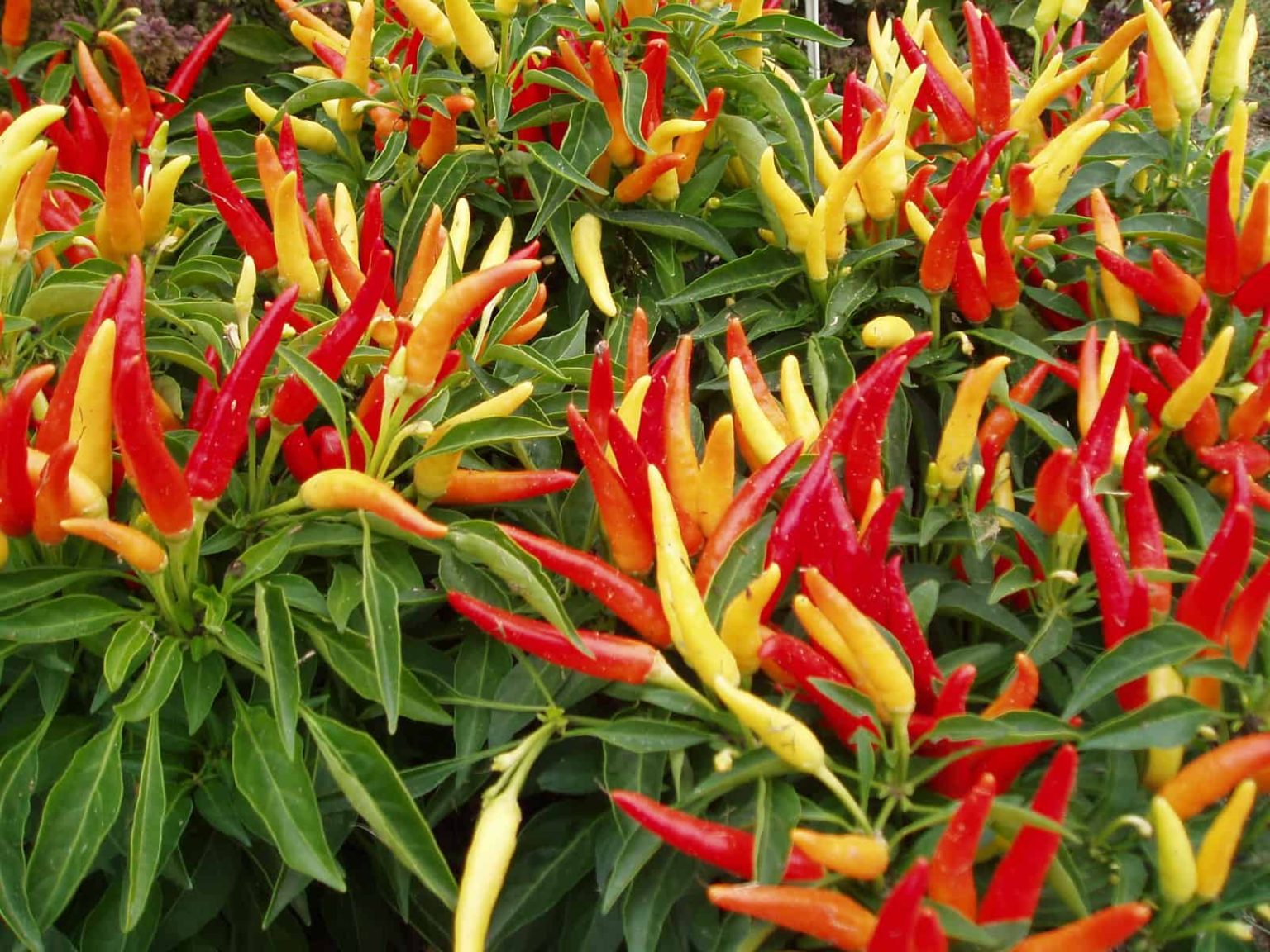A fulfilling experience can come from growing chilli peppers at home, especially when you get to savour the flavour of the fresh, fiery chillies right out of your garden. Here are some pointers to guarantee thriving growth:
1. Selecting the Correct Variety Climate: Select chilli pepper cultivars that are appropriate for your area. Varieties like ‘Jalapeño’ and ‘Serrano’ are perfect for milder areas. Habanero or Ghost Pepper may do better in warmer climates.
area: While larger types require more area, compact varieties, like “Cayenne,” work well for container planting.
2. Beginning with seedlings or seeds
Seeds: Eight to ten weeks prior to the last anticipated frost, start seedlings inside. Make use of a seedling tray filled with premium seed starting mix.
Seedlings: When purchasing seedlings, choose robust plants free of illness or yellowing.
3. Getting Ready for the Soil
Acidity Level: Soils with a pH of 6.0 to 6.5 are ideal for growing chilli peppers.8. Drainage: Verify that the soil has adequate drainage. Add sand or compost to thick clay soils to amend them.
Add organic materials, such as compost, to the soil to enhance it with nutrients. Steer clear of excessive nitrogen as it promotes foliage development rather than fruit production.
4. Planting Spacing: To promote ventilation and guard against disease, space plants 18 to 24 inches apart.
Plant seedlings at the same depth as their nursery pots were planted at. If you are beginning with seeds, plant them 1/4 inch deep.
5. Watering Consistency: Apply water to the soil on a regular basis to maintain it damp but not soggy. Rotten roots might result from overwatering.
Mulching: To maintain moisture and inhibit the growth of weeds, mulch the area around the base of the plants.
6. Sunlight Requirements: A minimum of 6 to 8 hours of direct sunlight each day are necessary for chilli peppers.
Indoor Growth: If cultivating indoors, utilise grow lights or put them next to a window that faces south.
7. The process of fertilisation
Balanced Fertiliser: After the plants begin to bloom, apply a balanced fertiliser (10-10-10) to them. Steer clear of too much nitrogen.
Frequent Feeding: To encourage fruit output, fertilise every two to three weeks.
8. Control of Insects and Diseases
Common Pests: Keep an eye out for spider mites, aphids, and whiteflies. As a natural cure, apply neem oil or insecticidal soap.
illnesses: By maintaining adequate air circulation and avoiding overhead watering, you can prevent illnesses like powdery mildew.
 9. Support Staking: Support may be required for some kinds. As the plants mature and bear fruit, support them with cages or posts.
9. Support Staking: Support may be required for some kinds. As the plants mature and bear fruit, support them with cages or posts.
10. Gathering
When to harvest: Depending on the kind, chilli peppers should be harvested when they are fully coloured, which can be either green, red, or orange.
Cutting: To remove the peppers from the plant without damaging the stem, use pruning shears or scissors.
11. Spending the winter indoors
Bringing Interiors: To overwinter potted plants in colder climates, bring them inside before the first frost.
Pruning: Reduce the size of the plant to promote springtime growth.
You can grow colourful chilli peppers at home and spice up your meals by using these ideas. Cheers to your successful gardening!

